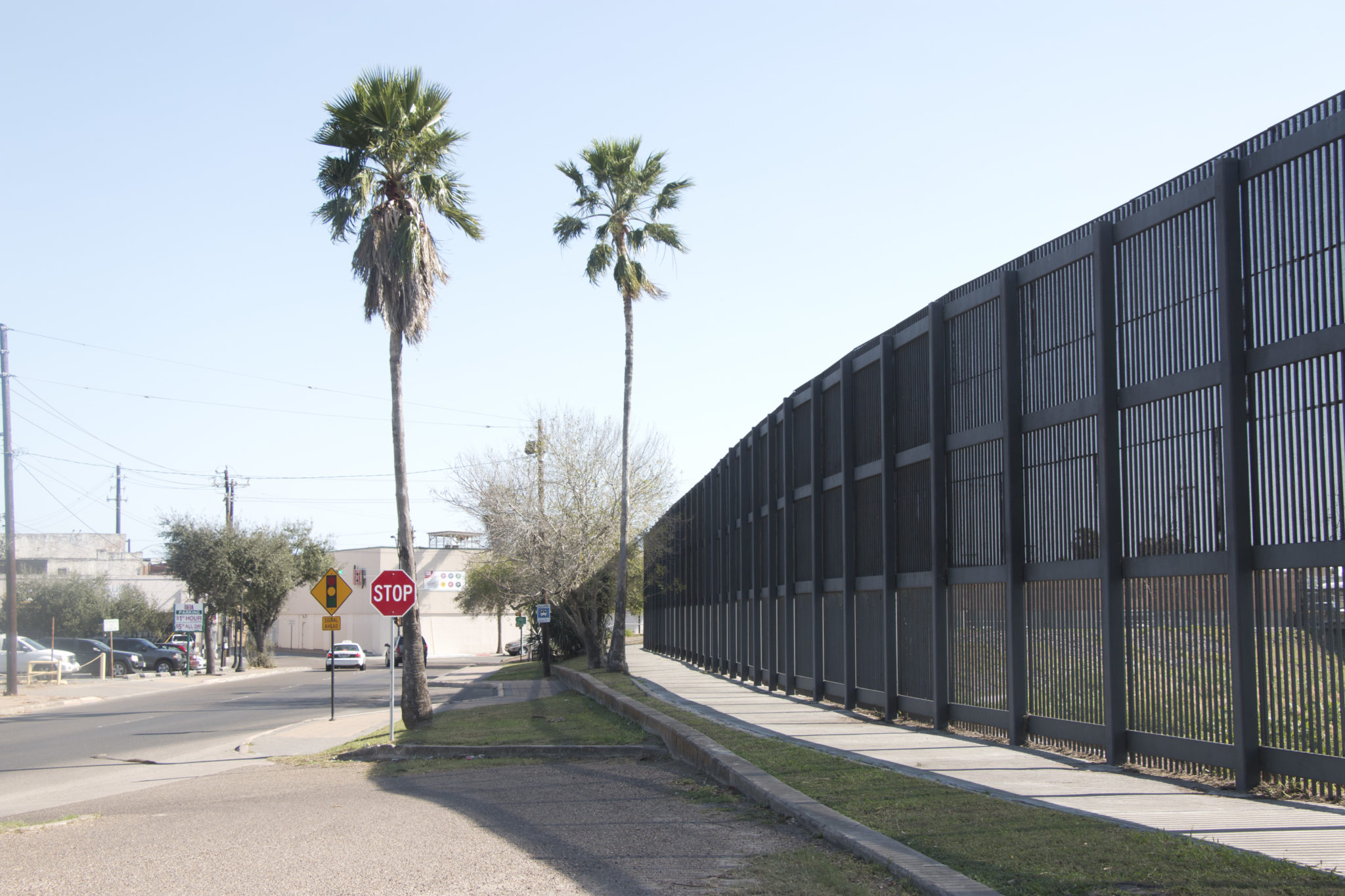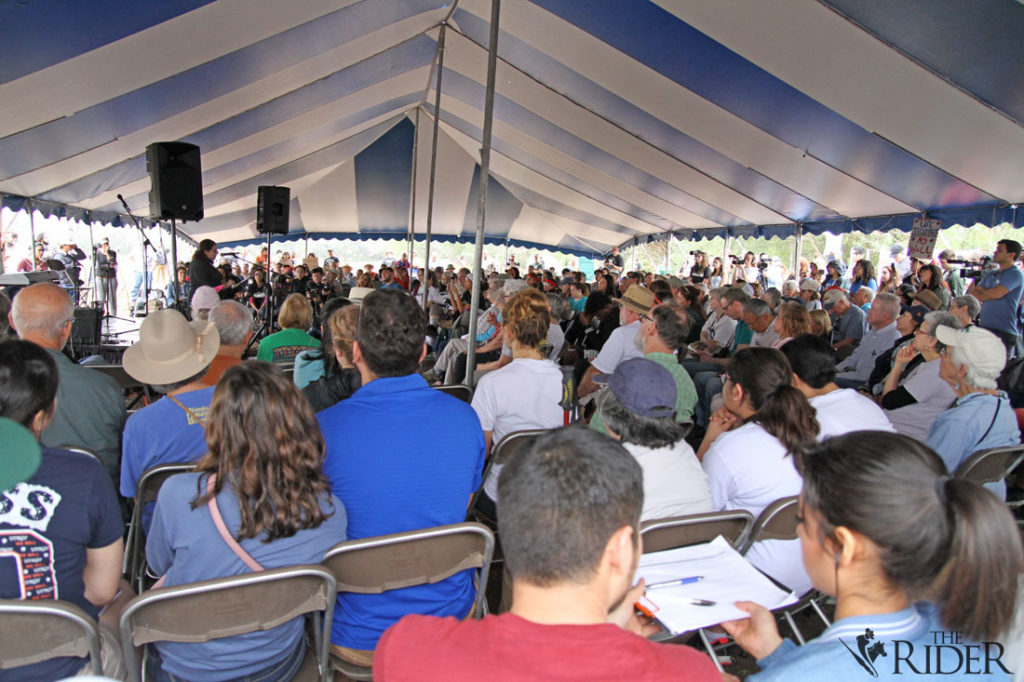
One year and 11 days have passed since President Donald Trump announced his executive order to build a wall along the U.S. southern border and people are still uncertain about the status of the project.
Executive Order 13767: Border Security and Immigration Enforcement Improvements has been the center of attention because of Trump’s plan to build a border wall to protect the United States.
“The purpose of this order is to direct executive departments and agencies … to deploy all lawful means to secure the Nation’s southern border, to prevent further illegal immigration into the United States, and to repatriate illegal aliens swiftly, consistently, and humanely,” Trump stated in his announcement, which was published Jan. 25, 2017, on www.whitehouse.gov.
Last Tuesday, Trump gave his first State of the Union address, in which he mentioned his four-pillar plan to create a resolution for the Deferred Action for Childhood Arrivals situation.
As The Rider reported last week, the president’s four-pillar plan includes the establishment of a pathway to citizenship for people brought to the U.S. illegally at a young age, the construction of a wall along the U.S.-Mexico border, the ending of the U.S. visa lottery system and gets rid of “chain migration” by limiting sponsorships to spouses and children.
“These four pillars represent a down-the-middle compromise and one that will create a safe, modern and lawful immigration system,” Trump said in his address. “For over 30 years, Washington has tried and failed to solve this problem. This Congress can be the one that finally makes it happen. Most importantly, these four pillars will produce legislation that fulfills my ironclad pledge to only sign a bill that puts America first. So let’s come together, set politics aside and finally get the job done.”
In an interview with The Rider, U.S. Rep. Vicente Gonzalez (D-Texas) said Congress has not yet given Trump the money to build the wall.
“The money hasn’t been appropriated,” Gonzalez said. “So there are several immigration bills that they are trying to attach [to] border wall funding. That is the way they are trying to negotiate the border wall. They are trying to use Dreamers and other immigrants as a pawn to negotiate a border wall.”
He said the border wall is not under construction, but there have been studies funded by other appropriations to survey the land where they plan to build it.
“There is not an actual construction of brick and mortar,” Gonzalez said. “But there are government engineers that have been out scaling places and doing studies of where they could potentially build the wall.”
He said a border wall would send “an awful diplomatic message to the country of Mexico and our neighbors to the south.”
“I don’t believe it will be an effective method of bringing border security, so I think it’s going to be a huge waste of taxpayer dollars,” Gonzalez said.
On Jan. 16, people protested in front of Gonzalez’s office in Edinburg because he voted in favor of a resolution to keep the government open that did not include “protections for immigrant youth,” according to a news release from La Union del Pueblo Entero, or LUPE.
Asked about the protest, he replied, “I didn’t vote against DACA recipients. I have supported every single bill and every single law that could potentially give DACA recipients a pathway to citizenship. But … [on] Feb. 1, health insurance was going to expire for our children, and because of that bill, we were able to get health insurance for children for six more years and we still have until March to fix the Dreamer bill.”
Gonzalez said he still supports Dreamers and that he is trying to get them a path to citizenship.
“On Feb. 1, we were going to lose health insurance for 60,000 kids in my district and I couldn’t allow that to happen,” he said. “… Those protests, they were misdirected and that is exactly what the Republican Party wants. They want to divide us and we should not allow that. We should be stronger and smarter than that, and not allow that to happen.”
Jim Chapman, a citizen activist with several conservation organizations, including the Sierra Club, and vice president for the Friends of the Wildlife Corridor, said the design of the border wall that is planned for construction in the area of the Santa Ana National Wildlife Refuge in Hidalgo County is the worst design for wildlife.
“In Hidalgo County, in particular, the kind of wall they’re going to put up is a 18- or 20-foot concrete vertical wall with a steel fence on top of that,” Chapman said. “In a flood, nothing will be able to get out, only things that can fly out. So, all terrestrial wildlife, basically, will drown.”
The Santa Ana National Wildlife Refuge consists of 2,088 acres. It is located south of Alamo near the Rio Grande and is “positioned along an east-west and north-south juncture of two major migratory routes for many species of birds,” according to www.fws.gov/refuge/Santa_Ana/about.html. “It is also at the northern-most point for many species whose range extends south into Central and South America.”
Chapman said the refuge is important because there is little left of the original habitat.
“The Valley, because of where it is, because it’s so far south, it gets a lot of subtropical species of plants and animals,” he said. “You also have the influence of the desert to the west and then you have the effect of the ocean to the east and you have the effect of temporal species from the north.
“… It was recognized by the 1970s that Santa Ana by itself was really too small to preserve that diversity because the Valley kept being cleared more and more, and so in 1979, the government authorized the Lower Rio Grande Valley National Wildlife Refuge, which is basically a kind of a corridor, or refuge tracts, along the river. So, there’s now close to a hundred refuge tracts along the river in the Valley. The Santa Ana is the oldest and one of the biggest, and the most visited, but the border wall would actually affect all those refuge tracts, not just Santa Ana.”
Asked about the effects the border wall would have on the refuges, Chapman replied, “The wall will basically run along the edge of the refuge and other refuge tracts straddle the levee. In other words, part of the refuge is on one side of the levee and part of the refuge is on the other. … Every tract will be affected, some more heavily than others, and probably the worst single effect will be when the river goes into flood, which happens about every 10 years. The last time was 2010 … and when there is a wall, wildlife won’t be able to get out.”

He said that if built, the border wall would probably include a 150-foot “enforcement zone.”
“[The Department of Homeland Security] will go inside the refuges, where they will clear all vegetation, keep it cleared and have lights there 24/7,” Chapman said. “So … just in Santa Ana, that amounts to 50 acres of forest being destroyed. And, by having that lit all the time, that impacts a lot of nocturnal wildlife. So, you have impacts from the clearing, impacts from the lights [and] impacts from the wall.”
On Jan. 27, hundreds of people from across the state and nation attended a rally on a farm field next to the Santa Ana National Wildlife Refuge. The rally was organized to mark the 75th anniversary of the refuge in the hope of sending a message to Congress to stop the border wall and call for a clean DREAM Act.
Valley native Chris Sandoval said he has been to several protests because something has to be done about the wall.
“It’s completely affecting our communities and it’s directly affecting a lot of our relatives and ourselves,” Sandoval said. “We need to make sure that it’s known that we are not for this and that everything we are doing is fighting against this, so that there won’t ever be any question on whether or not we were in agreement about it.”
The Santa Ana National Wildlife Refuge was designated a registered natural landmark in 1967 under the provision of the Historic Site Act.
Mark Kaswan, a UTRGV political science professor, said the border wall must be understood as more of a symbol than a border security approach.
“The border wall is a symbol. It is a symbol of the attitude of people in the United States towards our southern neighbors, and it is clearly a negative attitude,” Kaswan said. “There is no real connection between immigration and the wall. There is this false idea that immigration and border security are connected. They are not connected. Most people come into the United States legally. Some people, in fact most of the people who are in the country without papers, entered the country legally, and then did not leave. They have student visas, or they have kind of a work visa, or a tourist visa. That is the vast majority of all undocumented immigrants.”
He said the number of immigrants who cross the border without going through a checkpoint is relatively small.
Kaswan said Trump’s border wall would not affect drug trafficking significantly.
“Most of the drugs come through the cross points,” he said. “I mean, yeah, there are some, you know, they use catapults so they throw the drugs. I mean, all you have to do is get a stronger catapult. Or, if they are using drones, I mean, just have the drone fly a little bit higher. A wall is not going to stop that. Or, you know, you do more tunnels.”
Kaswan said a border wall would actually create more demand for drugs in the U.S. since less drugs would be trafficked. This in turn, would raise the prices of illegal drugs and, therefore, it would create a bigger incentive for drug smugglers.
Asked about the effects the border wall would have on the community, he replied, “First of all, you have the destruction caused by construction. Now, that might actually provide a small boost economically if people are employed doing that. But, frankly, not very much, and not for very long. Not only that, but there is no warranty they will hire workers locally. It would have a devastating effect on the local environment. This is an area that depends quite heavily on ecotourism. … So, by doing things like effectively destroying the Santa Ana [National] Wildlife Refuge and the National Butterfly Center, you are damaging ability of the area to be a destination for tourists.”
Kaswan said the border wall will also affect the cultural side of the Rio Grande Valley.
“Brownsville, in particular, emphasizes its connection to Mexico,” the political science professor said. “This is an area with deep and strong cultural roots. … Obviously, the wall is not going to break that. But, again, it is the symbolic value of that wall. It is a slap in the face to the people of the Rio Grande Valley. It is a physical insult to the people of this area.”
Gonzalez said he hopes Congress can get to a resolution before Thursday, which is the deadline the White House has imposed to Congress.
“It is a shame that they are using DACA as a negotiating tool for the wall because it puts members in a very complex situation, especially members that are not on the border,” he said. “If you are on the border, you care about the border wall. If you are in Chicago, or Connecticut, or somewhere up north, and you have Dreamers, that is your main concern. You might not be too concerned about the wall.”
Gonzalez encourages people to call members of Congress and U.S. senators, as well as get involved and vote.
Chapman urges student organizations to come out publicly against the wall and recommends sending letters to politicians, especially to Sen. John Cornyn (R-Texas), who he says is the most powerful person regarding the border wall issue.
Kaswan said the border wall will be regarded internationally as a symbol of hate.
“What they are talking about here is creating something that would have very little positive impact and a lot of negative impact,” he said. “They are pushing it not because it will work, not because of the benefits that it would draw. They are pushing it because of what it symbolizes.”
–Lesley Robles contributed to this report.





